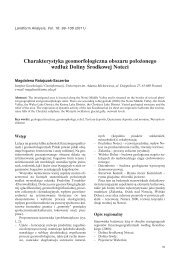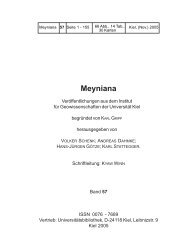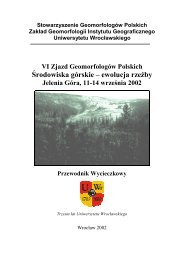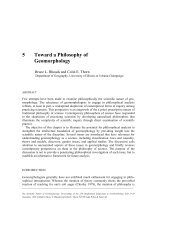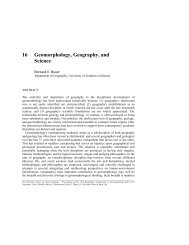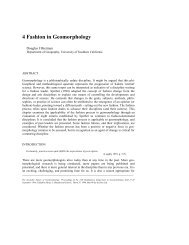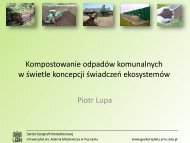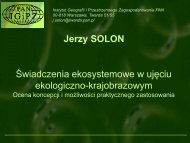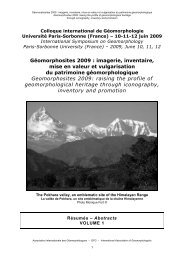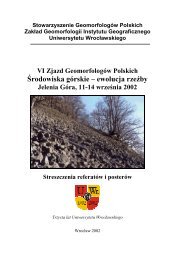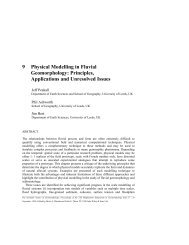ASTER User's Guide - Aster - NASA
ASTER User's Guide - Aster - NASA
ASTER User's Guide - Aster - NASA
You also want an ePaper? Increase the reach of your titles
YUMPU automatically turns print PDFs into web optimized ePapers that Google loves.
<strong>ASTER</strong> Users Handbook<br />
Surface Reflectance<br />
Lead Investigator: Kurt Thome<br />
Short Name: AST_07<br />
Product Level: 2<br />
Production Mode: On-Demand<br />
Absolute Accuracy: 0.01 for reflectance < 0.15<br />
7 % for reflectance > 0.15<br />
Relative Accuracy: 0.005<br />
Horizontal Resolution: 15, 30 m<br />
Units: None<br />
Product Size (Megabytes): 189 (VNIR), 79 (SWIR)<br />
Product Description<br />
The Level-2 surface reflectance data set (AST07) contains surface reflectance for each of the<br />
nine VNIR and SWIR bands at 15-m and 30-m resolutions, respectively. The results are<br />
obtained by applying an atmospheric correction to radiances reported by the <strong>ASTER</strong> sensor. The<br />
atmospheric correction removes effects due to changes in satellite-sun geometry and atmospheric<br />
conditions. The atmospheric correction algorithm is applied to clear-sky pixels only and the<br />
results are reported as a number between 0 and 1.<br />
Algorithm Description<br />
The atmospheric correction algorithm used to retrieve the surface reflectance relies on a look-up<br />
table (LUT) approach. The LUT contains forward radiative transfer calculations from a Gauss-<br />
Seidel iteration code to compute at-satellite radiance for a set of assumed surface reflectance<br />
values and a variety of atmospheric conditions. The atmospheric correction is applied by using a<br />
set of input atmospheric conditions relating to the <strong>ASTER</strong> scene of interest to select a portion of<br />
the LUT. The output of the LUT search is a set of surface reflectance/at-sensor radiance pairs.<br />
Using linear interpolation on these pairs, a radiance reported by <strong>ASTER</strong> is converted to a surface<br />
reflectance. The atmospheric conditions are defined by the aerosol size distribution (or<br />
equivalently the aerosol type), the aerosol amount, surface pressure, and the sun-satellite<br />
geometry, The aerosol information is obtained from outside sources, for example MISR,<br />
MODIS, or climatological means. The scattering phase functions of the aerosol particles in the<br />
atmosphere are assumed to scatter as mie particles using the aerosol size distribution information<br />
supplied by MISR or MODIS. The results from this method will be in reflectance units (values<br />
between 0 and 1) with an accuracy dependent upon the accuracy of input atmospheric conditions<br />
and the surface slope. The model is expected to lose accuracy in terrain with high relief due to<br />
the assumption of horizontal homogeneity made in the radiative transfer code. Also because of<br />
this assumption, the model will give less accurate results in regions where the atmosphere or<br />
surface are not horizontally homogeneous on the scale of several pixels.<br />
Applications<br />
100



